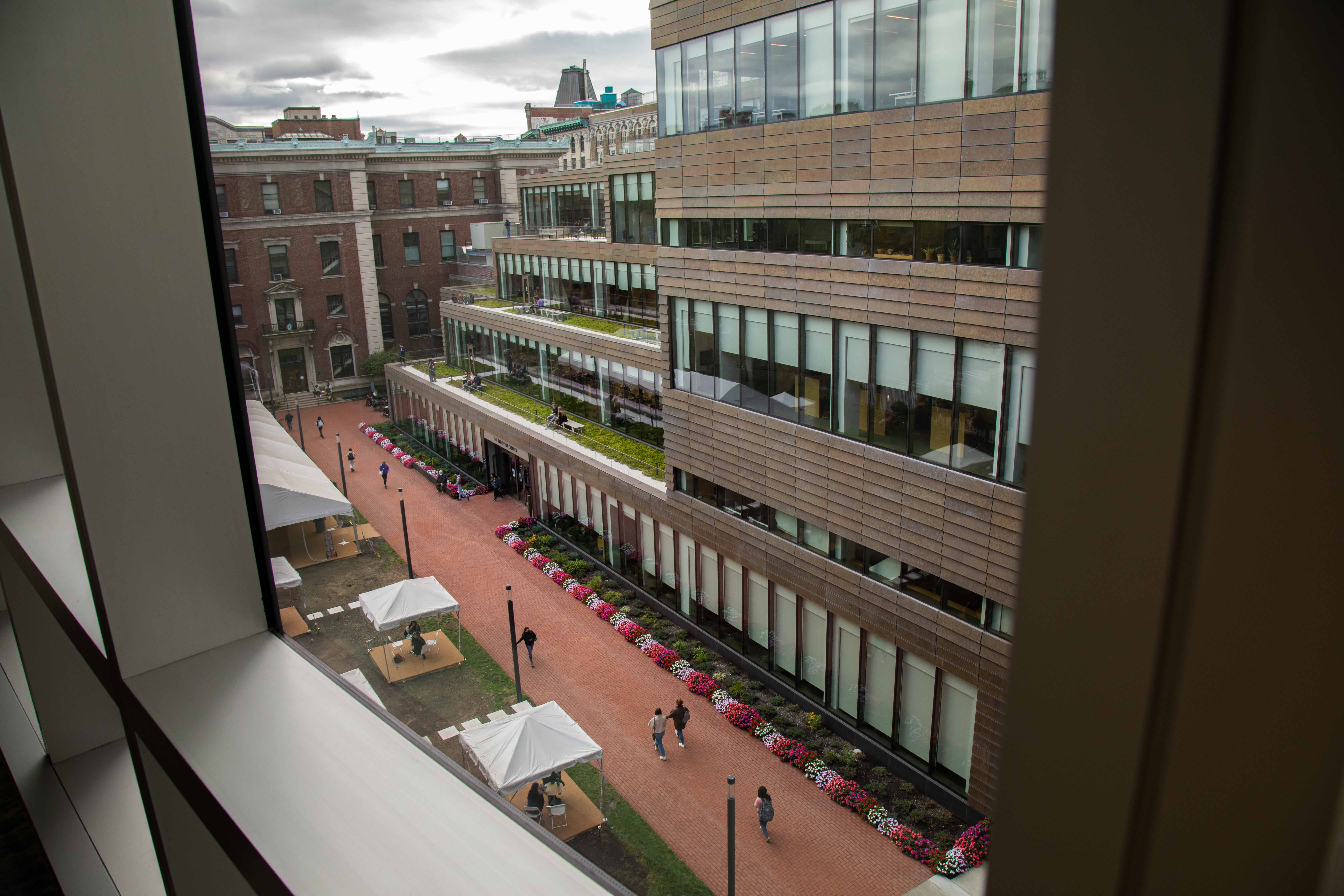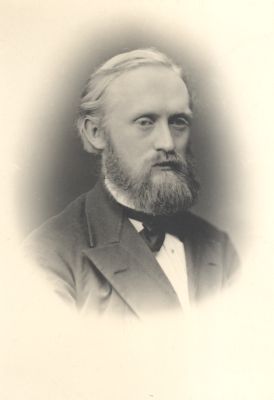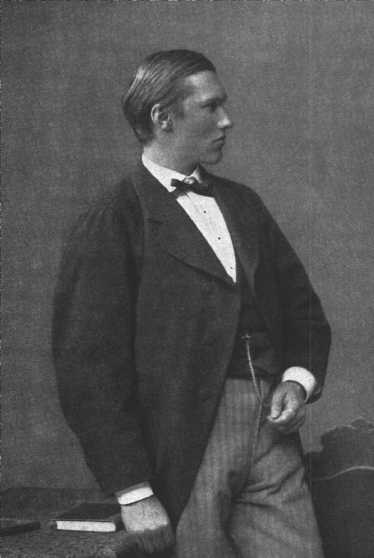|
Margarete Bieber
Margarete Bieber (31 July 1879 – 25 February 1978) was a Jewish German-American art historian, classical archaeologist and professor. She became the second woman university professor in Germany in 1919 when she took a position at the University of Giessen. She studied the theatre of ancient Greece and Rome as well as the sculpture and clothing in ancient Rome and Greece. Bieber left Germany after the Nazis seized power and she made her way to the United States where she taught at Barnard College, Columbia University and Princeton University. She published hundreds of works during her career and authored definitive works in four areas of study: the Greek and Roman theater, Hellenistic sculpture, ancient dress, and Roman copies of Greek art.Medwid, M. (2000) The makers of classical archaeology, p. 37 She emphasised that Roman reproductions of Greek originals were essentially Roman works and carried the stamp of Roman civilization. Biography Early life and education Mar ... [...More Info...] [...Related Items...] OR: [Wikipedia] [Google] [Baidu] |
Barnard College
Barnard College is a Private college, private Women's colleges in the United States, women's Liberal arts colleges in the United States, liberal arts college affiliated with Columbia University in New York City. It was founded in 1889 by a group of women led by young student activist Annie Nathan Meyer, who petitioned Columbia University's trustees to create an affiliated college named after Columbia's 10th president, Frederick Augustus Porter Barnard, Frederick A. P. Barnard. The college is one of the original Seven Sisters (colleges), Seven Sisters—seven Liberal arts colleges in the United States, liberal arts colleges in the Northeastern United States that were historically Women's colleges in the United States, women's colleges. Barnard is a Columbia University-affiliated undergraduate college with independent admission, curricula, and finances. Students share classes, libraries, clubs, Fraternities and sororities, sororities, athletic fields, and dining halls with Columbi ... [...More Info...] [...Related Items...] OR: [Wikipedia] [Google] [Baidu] |
Franz BĂĽcheler
Franz Bücheler (3 June 18373 May 1908) was a German classical scholar, was born in Rheinberg, and educated at Bonn, where he was a student of Friedrich Ritschl (1806–1876). Biography In 1856, Bücheler graduated from the University of Bonn with a dissertation on linguistic studies of the Emperor Claudius. He held professorships successively at Freiburg (associate professor in 1858, full professor in 1862), Greifswald (from 1866), and Bonn (1870 to 1906). At Bonn, he worked closely with Hermann Usener (1834–1905). Both as a teacher and as a commentator, he was extremely successful. His research spanned the entirety of Greco-Roman antiquity, from poetry and sciences to the mundane aspects of everyday life. In 1878, he became joint-editor of the ''Rheinisches Museum für Philologie''. Among his editions are: *''Frontini de aquis urbis Romae'' (Leipzig, 1858) *''Pervigilium Veneris'' (Leipzig, 1859) *''Petronii satirarum reliquiae'' (Berlin, 1862; 3rd ed., 1882) *''Grundris ... [...More Info...] [...Related Items...] OR: [Wikipedia] [Google] [Baidu] |
Georg Loeschcke
Georg Loeschcke (28 June 1852 – 26 November 1915) was a German archaeologist born in Penig, Saxony. He studied archaeology under Johannes Overbeck at Leipzig, afterwards continuing his education at the University of Bonn, where he was a student of Reinhard Kekulé von Stradonitz. In 1877–78 he participated in a study trip to Greece and Italy under the aegis of the Deutsches Archäologisches Institut. As a result of this research, he published with Adolf Furtwängler, ''Mykenische Thongefäße'', a landmark work that provided important historical timelines for Mycenaean pottery. In their investigations of Mycenaean pottery, Loeschcke and Furtwängler gave distinctions between it and Geometric pottery. A Biographical Dictionary of Historic Scholars, Museum Professionals and Academic Historians of ... [...More Info...] [...Related Items...] OR: [Wikipedia] [Google] [Baidu] |
Paul Clemen
Paul Clemen (31 October 1866 – 8 July 1947) was a German art historian known in particular for his large inventory of monuments in the Rhineland area, many of which were destroyed or severely damaged in World War II. Clemen was born in Leipzig, son of Professor Christian August Julius Clemen (1838–1920) and his wife Helene Voigt (1842–1907). His two brothers Carl and Otto became prominent scholars in their own right in the fields of comparative religion and history, respectively. He studied at the universities of Strassburg (now Strasbourg), where he was awarded his doctorate in 1889 for a dissertation on the portraits of Charlemagne (''Porträtdarstellungen Karls des Grossen'') and Bonn, where, in 1893, he received his ''habilitation''. He was appointed ''provinzialkonservator'' in the Rhine Province in the same year, in which capacity he became responsible for conservation and documentation of the monuments in the province. He became extraordinary professor of art histor ... [...More Info...] [...Related Items...] OR: [Wikipedia] [Google] [Baidu] |
Ulrich Von Wilamowitz-Moellendorff
Enno Friedrich Wichard Ulrich von Wilamowitz-Moellendorff (22 December 1848 – 25 September 1931) was a German classical philologist. Wilamowitz, as he is known in scholarly circles, was a renowned authority on Ancient Greece and its literature. Life Youth Wilamowitz-Moellendorff was born in Markowitz (Markowice), a small village near Hohensalza (Inowrocław), in the then Province of Posen (now part of the Kuyavian-Pomeranian Voivodeship), to a Germanized family of distant Polish ancestry. His father, a Prussian Junker, was Arnold Wilamowitz, of Szlachta origin and using the Ogończyk coat of arms, while his mother was Ulrika, née Calbo. The couple settled in a small manor confiscated from a local noble in 1836. The Prussian part of their name, von Moellendorf, was acquired in 1813 when Prussian field marshal Wichard Joachim Heinrich von Möllendorf adopted Ulrich's ancestors. Wilamowitz, a third child, grew up in East Prussia. In 1867 Wilamowitz passed his '' Ab ... [...More Info...] [...Related Items...] OR: [Wikipedia] [Google] [Baidu] |
Reinhard Kekulé Von Stradonitz
Reinhard Kekulé von Stradonitz (name at birth Kekulé, called Kekulé von Stradonitz only after 1889; 6 March 1839 – 23 March 1911) was a German archeologist. He has been called the founder of modern iconology (Langlotz). He served as director of the collection of antique sculpture and vases at the Antikensammlung Berlin, Berlin Museum (from 1889) and also as the director of the antiquarium of the Berlin Museum (from 1896). Kekulé was the nephew of the organic chemist August Kekulé. Biography Born at Darmstadt, Kekulé studied at the universities of Erlangen under Karl Friederichs, and at Berlin under Eduard Gerhard, Johann Gustav Droysen, and August Böckh. His time in Rome with Heinrich Brunn, Enrico Brunn was quite influential for his later writing. In 1870 he succeeded Otto Jahn, who had died prematurely, at the University of Bonn. In 1889 Kaiser Wilhelm II of Germany personally requested Kekulé to be the antiquities director of the collections in Berlin. In the followi ... [...More Info...] [...Related Items...] OR: [Wikipedia] [Google] [Baidu] |
Hermann Alexander Diels
Hermann Alexander Diels (; 18 May 1848 – 4 June 1922) was a German classical scholar, who was influential in the area of early Greek philosophy and is known for his standard work ''Die Fragmente der Vorsokratiker''. Diels helped to import the term Presocratic into classical scholarship and developed the Diels–Kranz numbering system for ancient Greek Pre-Socratic texts. Biography Hermann Alexander Diels was born to Ludwig A Diels, a railroad stationmaster and Anna D. Diels in Wiesbaden-Biebrich, Hesse on May 18, 1848, and attended a Gymnasium in Wiesbaden (1858-67) before pursuing studies in higher education. He was educated at the universities of Bonn and Berlin but did not have enough money to complete a habilitation. As a result, Diles became a teacher at a Gymnasium in Flensburg, the Gelehrtenschule des Johanneums in Hamburg and the Konigstadtische Realschule in Berlin. In 1882, Diels joined the faculty of the Humboldt University of Berlin and in 1886 became professo ... [...More Info...] [...Related Items...] OR: [Wikipedia] [Google] [Baidu] |
Toruń
Toruń is a city on the Vistula River in north-central Poland and a World Heritage Sites of Poland, UNESCO World Heritage Site. Its population was 196,935 as of December 2021. Previously, it was the capital of the Toruń Voivodeship (1975–1998) and the Pomeranian Voivodeship (1919–1939), Pomeranian Voivodeship (1921–1945). Since 1999, Toruń has been a seat of the local government of the Kuyavian-Pomeranian Voivodeship and is one of its two capitals, together with Bydgoszcz. The cities and neighboring counties form the Bydgoszcz–Toruń twin city metropolitan area. Toruń is one of the oldest cities in Poland; it was first settled in the 8th century and in 1233 was expanded by the Teutonic Knights. For centuries it was home to people of diverse backgrounds and religions. From 1264 until 1411, Toruń was part of the Hanseatic League and by the 17th century a leading trading point, which greatly affected the city's architecture, ranging from Brick Gothic to Mannerism, Mann ... [...More Info...] [...Related Items...] OR: [Wikipedia] [Google] [Baidu] |
Helene Lange
Helene Lange was born in 1848 in Oldenburg (city), Oldenburg. Through her determination, she rose above the trials of her early life, including the loss of her parents, to become a leading voice for women's access to higher education and professional careers, particularly in teaching. She helped motivate the establishment of thFrauenbewegung or women's movement, in Germany. She worked constantly to raise the standards of education among women, believing that social progress was impossible without equal educational opportunities being given to women. Life and education In addition to her work as an educator, Lange was also active in politics and social reform. In 1890, she founded the :de:Allgemeiner_Deutscher_Lehrerinnenverein, Allgemeiner Deutscher Lehrerinnenverein a general association of German female teachers, which was a network that fought for women educators to improve their working conditions and have more access to leading positions in the field. The work of Lange was a ... [...More Info...] [...Related Items...] OR: [Wikipedia] [Google] [Baidu] |
Dresden
Dresden (; ; Upper Saxon German, Upper Saxon: ''Dräsdn''; , ) is the capital city of the States of Germany, German state of Saxony and its second most populous city after Leipzig. It is the List of cities in Germany by population, 12th most populous city of Germany, the fourth largest by area (after Berlin, Hamburg, and Cologne), and the third-most populous city in the area of former East Germany, after Berlin and Leipzig. Dresden's urban area comprises the towns of Freital, Pirna, Radebeul, Meissen, Coswig, Saxony, Coswig, Radeberg, and Heidenau and has around 790,000 inhabitants. The Dresden metropolitan area has approximately 1.34 million inhabitants. Dresden is the second largest city on the River Elbe after Hamburg. Most of the city's population lives in the Dresden Basin, Elbe Valley, but a large, albeit very sparsely populated, area of the city east of the Elbe lies in the West Lusatian Hill Country and Uplands (the westernmost part of the Sudetes) and thus in Lusatia. ... [...More Info...] [...Related Items...] OR: [Wikipedia] [Google] [Baidu] |
Ĺšwiecie
Świecie (; ) is a town in northern Poland with 24,841 inhabitants (2023), capital of Świecie County in the Kuyavian-Pomeranian Voivodeship. It is located within the ethnocultural region of Kociewie in the historic region of Pomerania. Founded in the Middle Ages, Świecie prospered as a trade center due to its location at the intersection of important trade routes. The town features heritage sites in a variety of styles, including Gothic architecture, Gothic, Renaissance architecture, Renaissance, Baroque architecture, Baroque, Neo-Renaissance and Neo-Gothic, a preserved market square, and the region's sole Museum of Firefighting. Świecie is home to one of the oldest psychiatric hospitals in Poland. Location Świecie is located on the west bank of river Vistula at the mouth of river Wda, approximately north-east of Bydgoszcz, 105 kilometers south of Gdańsk and 190 kilometers south-west of Kaliningrad. Etymology The name of the town comes from the Polish word ''świecić'', ... [...More Info...] [...Related Items...] OR: [Wikipedia] [Google] [Baidu] |





